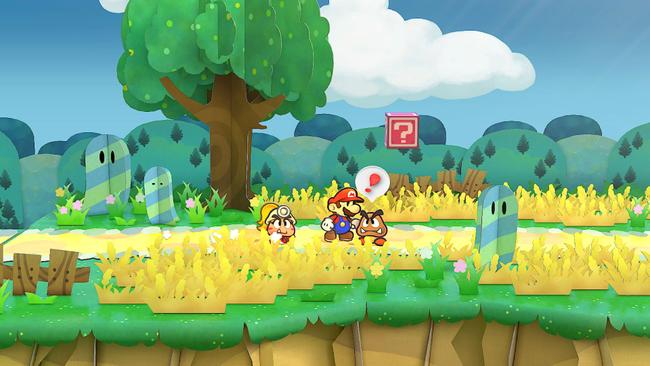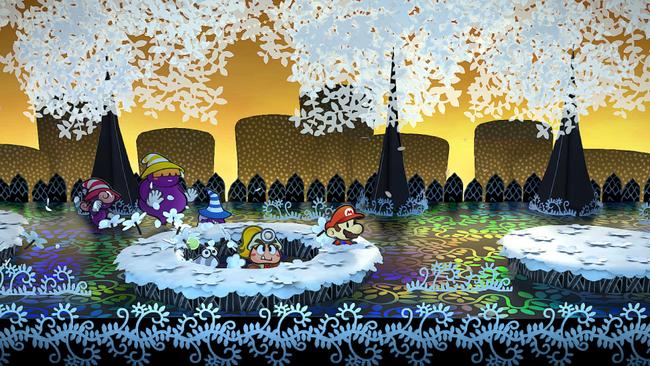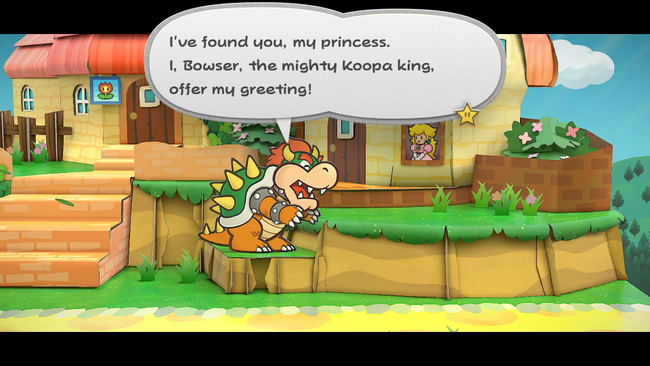
Paper Mario: The Thousand-Year Door Switch Review
In the twenty years since Paper Mario: The Thousand-Year Door released for the Nintendo Gamecube, it has achieved something of a crowd favorite status. There have been four games in the Paper Mario series since then, and while some of those entries are fine for what they are, they all strayed away from the series' foundational role-playing roots in some fashion or another. For years, I've seen fans hoping the next entry would be an RPG again, and some have been wanting a return to the RPG stylings so strongly that we've even seen a handful of inspired independent efforts to emulate those characteristics (including the surprisingly excellent Bug Fables: The Everlasting Sapling.)
Paper Mario: The Thousand-Year Door for Nintendo Switch is not a new RPG in the Paper Mario series, but perhaps it's the next best thing. While several classic first-party Nintendo titles have been officially available to play in recent generations thanks to Virtual Console (R.I.P.), Nintendo Switch Online, or other varying flavors of ports, The Thousand-Year Door has been locked away alone on the Gamecube for almost two decades. This new release for Nintendo Switch finally allows this crowd-favorite classic to be experienced by a new audience and a new generation.

TTYD is a relatively known quantity at this point, I imagine. It doesn't quite have the same bizarro weirdness factor that Super Mario RPG has, and in some ways, I prefer the brevity of the original Paper Mario 64, but as an overall package, The Thousand-Year Door is exceptionally strong. It has a great art style & overall presentation, the writing is incredibly charming, there are several memorable characters, and a surprisingly flexible turn-based combat system round out a captivating RPG.
As far as presentation goes, this remaster is one of those that may deceptively 'look like how you remember it' although several places have been notably upgraded, visually. The rainbow foliage carpeting the otherwise monochromatic Boggly Woods is probably one of the most noticeably enhanced locations in the game, and the wider aspect ratio gives you more screen real estate to more clearly see environments and enemies. It's perhaps a little unfortunate the game doesn't run at a higher framerate, but that's a minor nitpick.
Much of the music has been redone for this release, and for the most part, I greatly appreciate the work done here. Having each new area of the world incorporate a new version of the standard combat theme is actually pretty substantial. It makes battling in each new area a bit more exciting and varied rather than having the same theme the whole way through. However, in my opinion, the one causality of the redone music is Twilight Town, which isn't quite as painfully eerie as it was in the original release. Luckily, you can toggle to the original soundtrack whenever you'd like, so choose whichever you prefer.

The most frequent criticism I've seen levied at The Thousand-Year Door over the past 20 years, which might sound a little strange when stated plainly, is that the game has a lot of backtracking throughout its runtime. There are several moments where you have to retrace your steps as you head towards the next objective, sometimes quite literally heading back and forth, left and right, numerous times to proceed through the game. It seems like Nintendo and Intelligent Systems heard those criticisms, too, because there are a handful of adjustments made to address this.
There have been numerous places where new shortcuts have been added to reduce the backtracking tedium, at least a little bit. Probably the most significant addition of this sort is that the Rogueport Sewers have been rearranged ever-so-slightly in that all the Warp Pipes to each section of the world are now all in one spot. On top of that, access to each pipe unlocks a little bit earlier in the game than they did originally. Ultimately, this makes jumping around the world much easier than before. Tracking down General White in order to use the Fahr Outpost cannon in Chapter 7 is actually pretty trivial now.
Besides the sewer pipes, several other shortcuts have been added throughout the game. A significant example of this is a new warp pipe between Twilight Town and Creepy Steeple, which cuts the number of retreads between the two places in Chapter 4 in half (more if you return for sidequests). There's also a new bounce-pad added on a path in Keelhaul Key that allows you to bypass having to do a Yoshi flutter-jump every time you go to the Pirate's Grotto. There's also a new mini-shortcut in Hooktail's Castle, and there are possibly even other new shortcuts added I didn't realize weren't in the original game.

There are other minor quality-of-life additions, too. You can easily switch out your partner without going into a menu. Also, you can press a button to have a partner give you a clue about your current objective at any time, in case you get lost or forget what you are supposed to be doing.
You can also now skip dialogue scenes in the game, at least to some degree. Minor event scenes, such as Zess T.'s cooking animations, Merlon/Merlee/Merluvee magic animations, sleeping at inns, or travel scenes (when you use the the blimp or boat) can now be skipped entirely. Story scenes cannot be skipped the first time you see them, but if you have to reload from a Game Over, then they can be. That means you don't have to rewatch the lengthy scene before the final boss if you need to retry, for example.
A few of my minor personal criticisms of the original title still persist in its re-release. TTYD is still a little bit too chatty in places, and certain badges, partner abilities, and general strategies are still a bit overpowered in terms of game balance. But in the grand scheme of things, these are more minor annoyances than genuine detractors.
As far as new content goes — other adjustments aside — The Thousand-Year Door is more-or-less the same as it was in 2004, but there are a few new post-game boss encounters for those wanting to challenge themselves beyond reaching the credits. There are also some minor dialogue edits, and the most substantial of which — although I'm not the best person to talk at length about the subject — is that Vivian is unambiguously a transgender woman now, which is more true to the original Japanese compared to the original English release.
Paper Mario: The Thousand-Year Door is a good re-release of a good game, and adjustments made only improve upon it in small but substantial ways. It's an easy recommendation for general audiences and RPG fans. Now, where's my Luigi in Waffle Kingdom RPG?